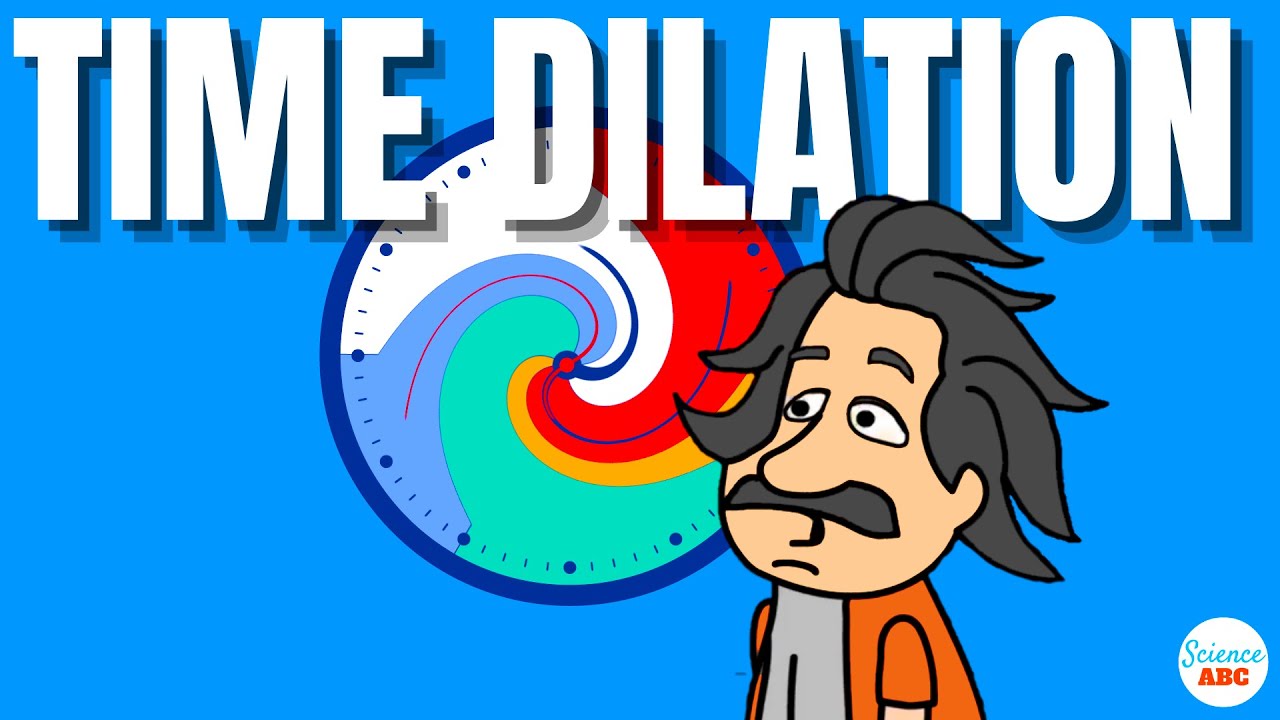Mind-bending Situations That Will Leave You In Awe - Beyond Reality
Mind-bending situations are those that challenge our perception of reality and leave us in awe of the complexity of the world around us. These mind-bending situations that will leave you in awe can be scientific, philosophical, or even just everyday experiences that force us to question what we know to be true.
Author:Morgan MaverickReviewer:Professor JhizMay 16, 20237 Shares674 Views

Mind-bending situations are those that challenge our perception of reality and leave us in awe of the complexity of the world around us. These mind-bending situations that will leave you in awe can be scientific, philosophical, or even just everyday experiences that force us to question what we know to be true.
Mind-bending Thought Situations That Will Leave You Questioning Reality
Check out these mind-bending situations that will leave you in awe:
Time Dilation
Time dilation is a fascinating concept in physics, and it occurs when time passes more slowly for an object that is moving relative to another object. This phenomenon was first predicted by Albert Einstein's theory of relativity, which revolutionized our understanding of time and space.
According to the theory of relativity, time is not absolute but rather depends on the observer's reference frame. This means that time can appear to pass differently depending on the relative motion of the observer and the object being observed. In other words, time is not a constant but is relative to the observer's frame of reference.
One of the most well-known examples of time dilation is the so-called "twin paradox." Imagine that two identical twins, Alice and Bob, are born at the same time. Alice stays on Earth, while Bob travels through space at a high speed, approaching the speed of light. When Bob returns to Earth, he finds that he has aged much less than Alice. This is because time appears to pass more slowly for Bob due to his high speed relative to Alice.
The concept of time dilation has been confirmed experimentally through a number of different methods. One of the most famous experiments involved atomic clocks that were flown on airplanes. Because the airplanes were moving at high speeds relative to the ground, the clocks on board appeared to tick more slowly than identical clocks that were left on the ground.
Another example of time dilation occurs near a massive object such as a black hole. In this case, time appears to pass more slowly for an observer who is near the black hole than for an observer who is far away. This is due to the strong gravitational pull of the black hole, which warps the fabric of spacetime and causes time to slow down.
Time dilation also has practical applications in everyday life. For example, the GlobalPositioning System (GPS) relies on the fact that time passes more slowly at high altitudes due to the weaker gravitational field. This means that the atomic clocks on board GPS satellites must be adjusted in order to stay synchronized with clocks on Earth.

Time Dilation - Einstein's Theory Of Relativity Explained!
The Concept Of Infinity
The concept of infinity is one of the most fascinating and perplexing ideas in mathematics and philosophy. Infinity refers to a quantity that is unbounded and unlimited, going on forever without any end.
While the concept of infinity is often associated with mathematics and science, it has also been explored in art, literature, and philosophy. In this article, we will delve deeper into the concept of infinity and its various forms.
The notion of infinity dates back to ancient times, with philosophers and mathematicians grappling with its paradoxical nature. The ancient Greeks, for example, were fascinated by the concept of infinity and its philosophical implications. One of the most famous examples of their interest in infinity is the paradox of Achilles and the tortoise.
According to this paradox, Achilles, the fastest runner, cannot catch up to a tortoise that is ahead of him, no matter how fast he runs, because he will always have a distance to cover. This paradox illustrates the idea that there are infinite subdivisions of distance, and therefore, infinity cannot be fully comprehended by the human mind.
In mathematics, infinity is used to describe quantities that are unbounded and unlimited. Infinity is often used in calculus to describe limits and infinitesimals, which are quantities that are infinitely small.
For example, the slope of a tangent line to a curve at a given point is defined as the limit of the slope of a secant line as the two points approach each other. This limit can be expressed as infinity or negative infinity, indicating that the slope is either infinitely steep or infinitely flat.
There are different forms of infinity in mathematics. One of the most well-known is countable infinity, which is the type of infinity that is associated with the set of natural numbers (1, 2, 3, 4, and so on).
This means that the number of natural numbers is infinite, but it is still countable because there is a one-to-one correspondence between each natural number and the set of all natural numbers. In other words, each natural number can be paired with another natural number, and there will always be a natural number left over.
Another form of infinity is uncountable infinity, which is the type of infinity associated with the set of real numbers. This type of infinity is uncountable because there is no one-to-one correspondence between each real number and the set of all real numbers.
This means that there are more real numbers than there are natural numbers, and therefore, the set of real numbers is a larger infinity than the set of natural numbers.
Infinity has also been explored in philosophy, particularly in the areas of metaphysics and epistemology. Metaphysical discussions of infinity focus on the nature of infinity itself, such as whether infinity is a real, objective quantity or a mental construct.
Epistemological discussions of infinity focus on our ability to understand and comprehend infinity, given that it is a concept that goes beyond the limitations of human perception and experience.
Infinity has also been explored in art and literature, particularly in the areas of surrealism and science fiction. Surrealist artists and writers often use images of infinity, such as endless staircases or Escher-like impossible shapes, to evoke a sense of the uncanny and the bizarre.
Science fiction writers often explore the concept of infinity in their depictions of other worlds and universes, imagining infinite variations of reality and existence.
The Concept Of Consciousness
Consciousness is a term used to describe the state of being aware of one's surroundings, thoughts, and feelings. It is the ability to perceive and experience the world around us, and to have a sense of self-awareness. Although consciousness is a universal human experience, it remains one of the most mysterious and complex phenomena in the field of neuroscience and philosophy.
The study of consciousness is a relatively new field, and there is still much that is unknown about how it works. However, there are several theories that attempt to explain this complex phenomenon.
One of the most well-known theories of consciousness is the Integrated Information Theory (IIT), which proposes that consciousness arises from the integration of information across different brain regions.
According to IIT, consciousness emerges when information is processed in a highly integrated and differentiated way. This theory suggests that consciousness is not simply a product of brain activity, but is instead a fundamental property of the universe, much like time and space.
Another theory of consciousness is the Global Workspace Theory (GWT), which suggests that consciousness arises when information is shared and integrated across different parts of the brain. This theory proposes that the brain acts like a "global workspace" that allows different regions to communicate and share information, leading to the experience of conscious awareness.
While these theories offer some insight into the workings of consciousness, the precise nature of this phenomenon remains elusive. One of the key challenges in studying consciousness is the subjective nature of the experience. Consciousness is an inherently personal and private experience, and it is difficult to study objectively using traditional scientific methods.

What is consciousness?
People Also Ask
What Are Some Examples Of Mind-bending Situations?
Some examples of mind-bending situations include optical illusions, paradoxes, and thought experiments that challenge conventional thinking.
How Do Mind-bending Situations Affect The Brain?
Mind-bending situations can stimulate the brain and improve cognitive function, as they require creative problem-solving and critical thinking skills.
Can Mind-bending Situations Be Used As A Therapeutic Tool?
Yes, mind-bending situations can be used as a therapeutic tool, particularly for individuals with cognitive or neurological disorders, as they can help improve cognitive function and neural connections.
Conclusion
Mind-bending situations are those that force us to think beyond our everyday experiences and challenge our understanding of the world. From physics to philosophy to everyday life, there are many examples of mind-bending situations that will leave you in awe of the complexity and mystery of the universe.

Morgan Maverick
Author
Morgan Maverick is an unorthodox news reporter driven by an insatiable hunger for the truth. Fearless and unconventional, he uncovers hidden narratives that lie beneath the surface, transforming each news piece into a masterpiece of gritty authenticity. With a dedication that goes beyond the boundaries of conventional journalism, Morgan fearlessly explores the fringes of society, giving voice to the marginalized and shedding light on the darkest corners.
His raw and unfiltered reporting style challenges established norms, capturing the essence of humanity in its rawest form. Morgan Maverick stands as a beacon of truth, fearlessly pushing boundaries and inspiring others to question, dig deeper, and recognize the transformative power of journalism.

Professor Jhiz
Reviewer
Professor Jhiz brings fun to teaching anatomy. Born in China, she shares her fascination for how the body works.
Students say her lectures are lively with jokes and stories. She draws cartoon diagrams that highlight structures creatively.
Professor seeks to inspire curiosity and joy in anatomy. She treats each class like a show using props and costumes.
When not teaching, Jhiz enjoys karaoke and novelty socks. Her goal is passing on a spirit of wonder to students.
Latest Articles
Popular Articles